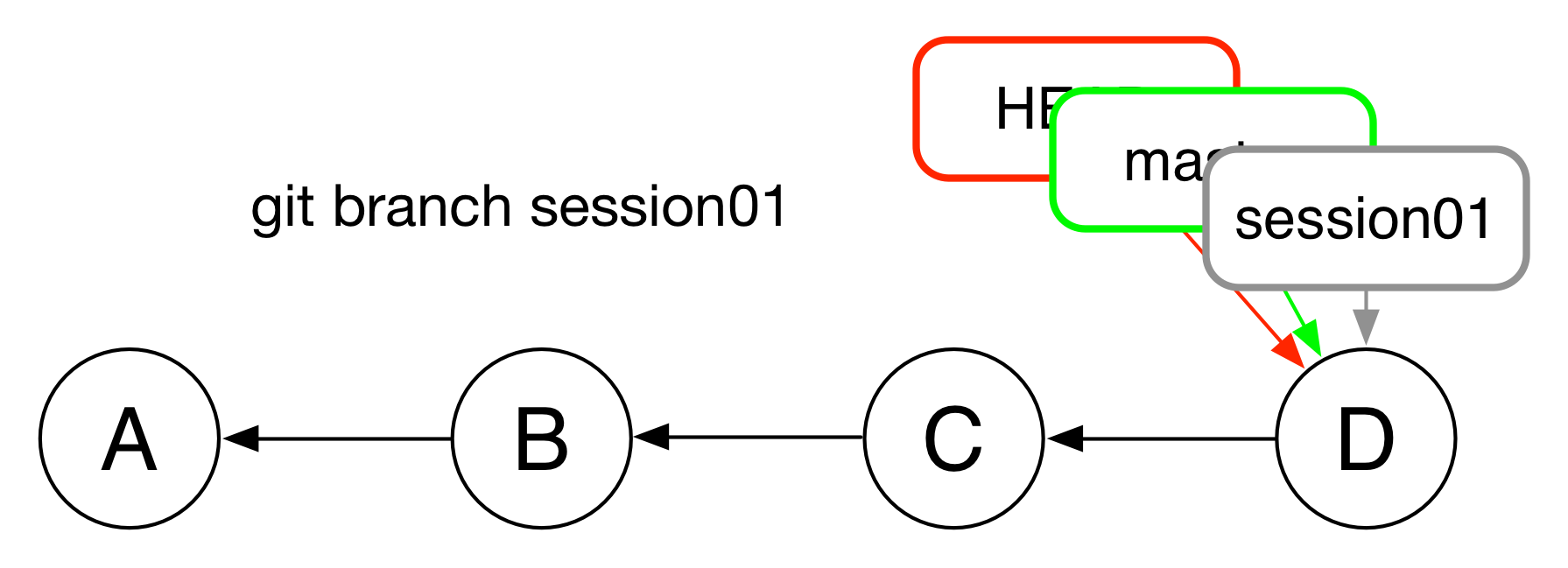git Overview¶
git is a very complex and powerful system. However, it can be very usefull even if you only use a small portion of its functionality. This page should be bring you up to speed enough to make good use of git for the Python Certificate class.
Note that in the certificat prgram we will be using git in conjuction with gitHub, a cloud-based service that provides a collaboration environemnt for software development based on the git version control system.
Learning Resources¶
- gitHub tutorial:
https://guides.github.com/activities/hello-world/
https://guides.github.com/introduction/flow/
Reading suggested at the end of session 1:
http://rogerdudler.github.io/git-guide/
https://try.github.io/levels/1/challenges/1
Pro git
The semi-offical documentation – the first few chapters are worth going through:
** git Branching: getting fancy **
Interactive tutorial about branching – try it right in the browser!
A Graphical Tutorial¶
A Picture of git¶
A git repository is a set of points in time, with history showing where you’ve been.
Each point has a name (here A, B, C) that uniquely identifies it, called a hash
The path from one point to the previous is represented by the difference between the two points.
Each point in time can also have a label that points to it.
One of these is HEAD, which always points to the place in the timeline that you are currently looking at.
You may also be familiar with the label “master”.
This is the name that git automatically gives to the first branch in a repository.
A branch is actually just a label that points to a specific point in time.
When you make a commit in git, you add a new point to the timeline.
The HEAD label moves to this new point.
So does the label for the branch you are on.
You can make a new branch with the branch command.
This adds a new label to the current commit.
Notice that it does not check out that branch.
You can use the checkout command to switch to the new branch.
This associates the HEAD label with the session01 label.
Use git branch to see which branch is active:
$ git branch
master
* session01
While it is checked out, new commits move the session01 label.
Notice that HEAD is always the same as “where you are now”
You can use this to switch between branches and make changes in isolation.
Branching allows you to keep related sets of work separate from each-other.
In class here, you can use it to do your exercises for each session.
Simply create a new branch for each session from your repository master branch.
Do your work on that branch, and then you can issue a pull request in github to have your work evaluated.
This is very much like how teams work in the “real world” so learning it here will help you.
The final step in the process is merging your work.
The merge command allows you to combine your work on one branch with the
work on another.
Sometimes when you merge two branches, you get conflicts.
This happens when the same file was changed in about the same place in two different ways.
Often, git can work these types of things out on its own, but if not, you’ll need to manually edit files to fix the problem.
You’ll be helped by the fact that git will tell you which files are in conflict.
Just open those files and look for conflict markers:
- <<<<<<<<< hash1 (stuff from the current branch)
- ========= (the pivot point between two branches’ content)
- >>>>>>>>> hash2 (stuff from the branch being merged)
Your job in fixing a conflict is to decide exactly what to keep.
You can (and should) communicate with others on your team when doing this.
Always remember to remove the conflict markers too. They are not syntactic code in any language and will cause errors.
Once a conflict is resolved, you can git add the file back and then commit
the merge.









